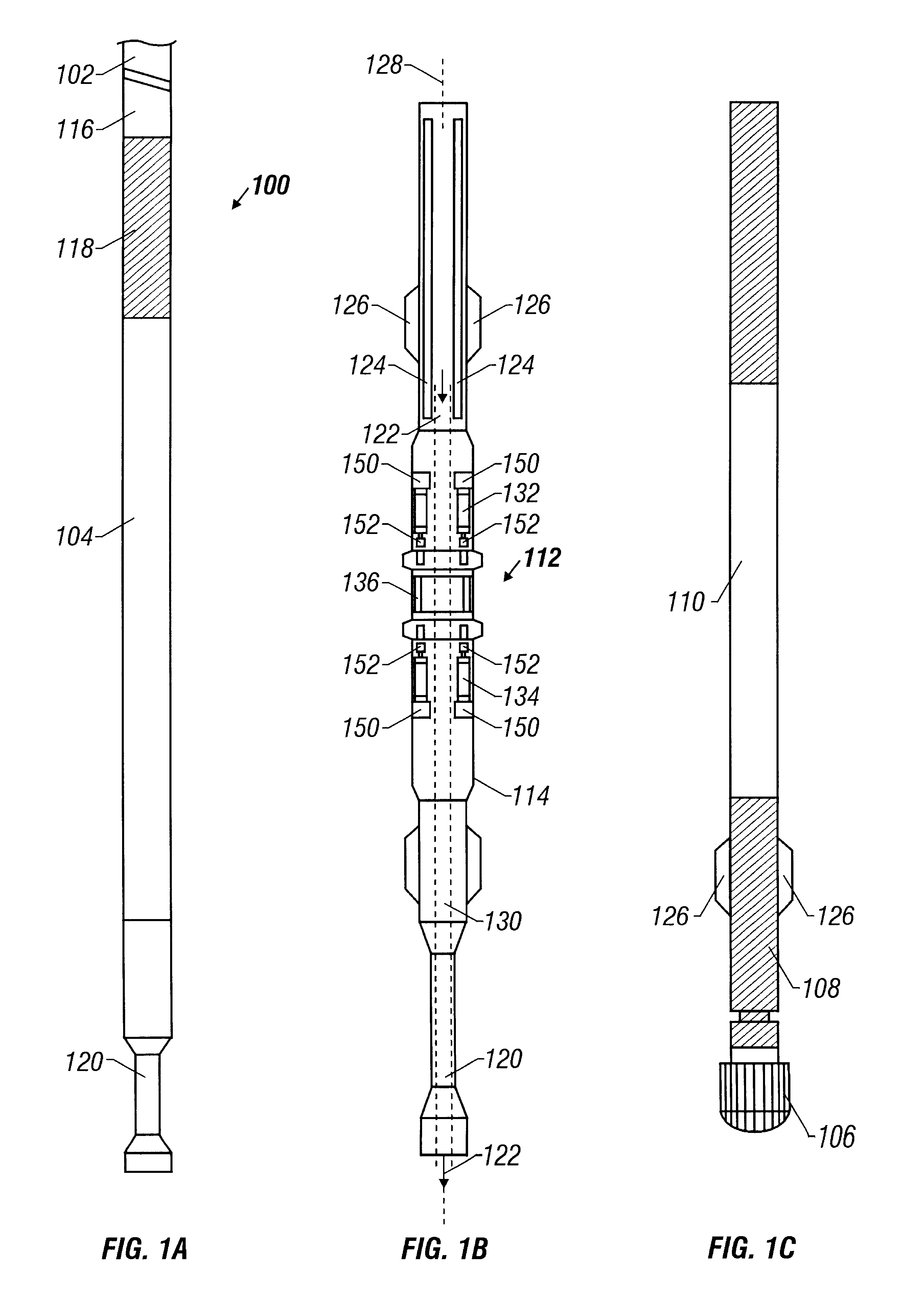Temperature compensated nuclear magnetic resonance apparatus and method
a nuclear magnetic resonance and temperature compensation technology, applied in the field of nuclear magnetic resonance, can solve the problems of reducing the size of the investigation region, increasing the temperature of the wellbore with the depth, and losing the strength of the magn
- Summary
- Abstract
- Description
- Claims
- Application Information
AI Technical Summary
Benefits of technology
Problems solved by technology
Method used
Image
Examples
Embodiment Construction
)
Referring to FIGS. 1A-1C, a drilling assembly 100 at the end of a drill string 102 or coiled tubing is illustrated according to the present invention. A measurement-while-drilling (MWD) tool 104, an associated pulsed nuclear magnetic resonance (NMR) tool 112 (contained within a housing 114) and electronic circuitry 124, and a pulsed power unit 118 are connected in tandem in the drilling assembly 100. Flex subs 120 are used for example in connecting the MWD tool 104 and the NMR tool 112 in the drilling assembly 100. The MWD tool 104 may also include a sonic sensor, a density measurement tool, and a porosity measurement tool. A communication sub 116 using, for example, two-way telemetry, is also provided as illustrated in the drilling assembly 100.
The drilling assembly 100 includes a drill bit 106, bearing assembly 108, and downhole mud motor 110. The drill string 102 includes, for example, sections of drill pipe connected end-to-end or a generally continuous coiled tubing (as descri...
PUM
 Login to View More
Login to View More Abstract
Description
Claims
Application Information
 Login to View More
Login to View More - R&D
- Intellectual Property
- Life Sciences
- Materials
- Tech Scout
- Unparalleled Data Quality
- Higher Quality Content
- 60% Fewer Hallucinations
Browse by: Latest US Patents, China's latest patents, Technical Efficacy Thesaurus, Application Domain, Technology Topic, Popular Technical Reports.
© 2025 PatSnap. All rights reserved.Legal|Privacy policy|Modern Slavery Act Transparency Statement|Sitemap|About US| Contact US: help@patsnap.com



